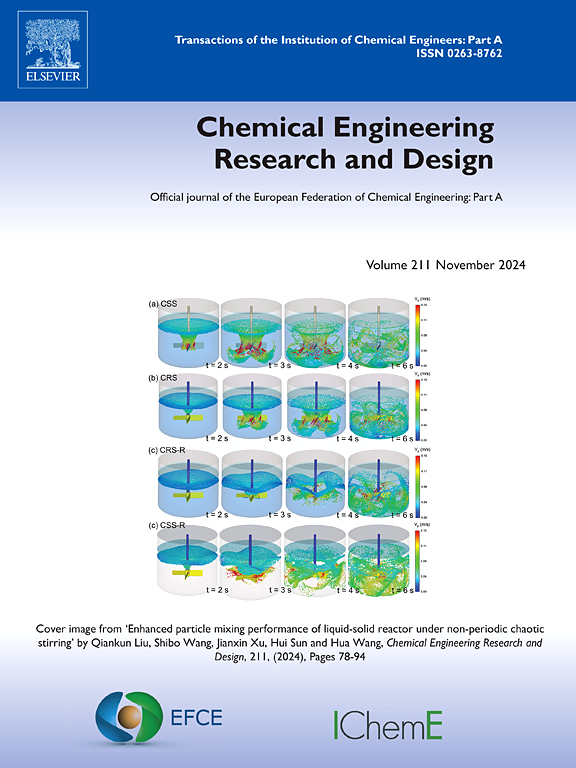Biomass fly-ash derived Li4SiO4 solid for pilot-scale CO2 capture, Part I: Modelling for a waste to capture CO2 process
IF 3.7
3区 工程技术
Q2 ENGINEERING, CHEMICAL
引用次数: 0
Abstract
This work presents a new modelled system of a biomass-based lithium orthosilicate solid adsorbent derived from industrial biomass fly-ash used to capture CO2 from power plant flue gas emissions. The model includes pre-treatment of biomass fly-ash, the synthesis of adsorbent, which utilizes fly-ash as the silicone source and a laboratory produced lithium source, the adsorption of CO2 from flue gas, and regeneration of adsorbent. The study compares the results from pre-treated and non-pre-treated biomass fly-ash, with benchmark CO2 capture rates of 87 % and 89.7 %, respectively and a maximum CO2 capture rate of 93.23 %. Key insights from the scenarios considered in this work show that an increased CO2 flue gas composition requires higher adsorbent mass and the most effective flue gas volume to adsorbent mass ratio between 3.7–4.1; additionally, higher regeneration temperatures result in improved CO2 capture while pre-treatment of fly-ash does not impact regeneration kinetics. Energy analysis show that the pre-treated fly-ash adsorbent is more efficient than the non-pretreated adsorbent but is not superior to amine-based post-combustion carbon capture. If effective heat integration were to be incorporated for the pre-treated and non-pre-treated adsorption processes, energy consumption could be reduced by 54 % and 85 % compared to amine-based capture, respectively. Cost analysis indicated that by incorporating a recycle stream for pre-treatment wastewater and altering the acid to solid ratio during pre-treatment acid wash, process costs may be reduced over 20 % making this a feasible alternative carbon capture process.
求助全文
约1分钟内获得全文
求助全文
来源期刊

Chemical Engineering Research & Design
工程技术-工程:化工
CiteScore
6.10
自引率
7.70%
发文量
623
审稿时长
42 days
期刊介绍:
ChERD aims to be the principal international journal for publication of high quality, original papers in chemical engineering.
Papers showing how research results can be used in chemical engineering design, and accounts of experimental or theoretical research work bringing new perspectives to established principles, highlighting unsolved problems or indicating directions for future research, are particularly welcome. Contributions that deal with new developments in plant or processes and that can be given quantitative expression are encouraged. The journal is especially interested in papers that extend the boundaries of traditional chemical engineering.
 求助内容:
求助内容: 应助结果提醒方式:
应助结果提醒方式:


